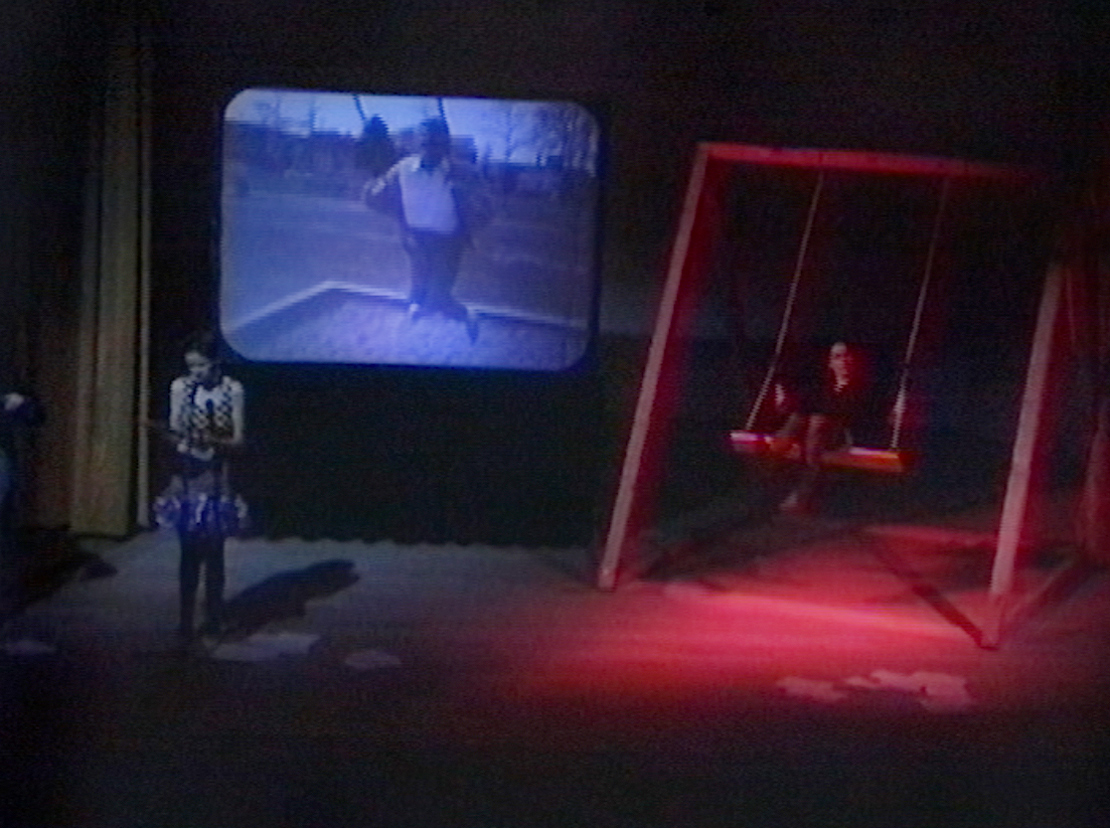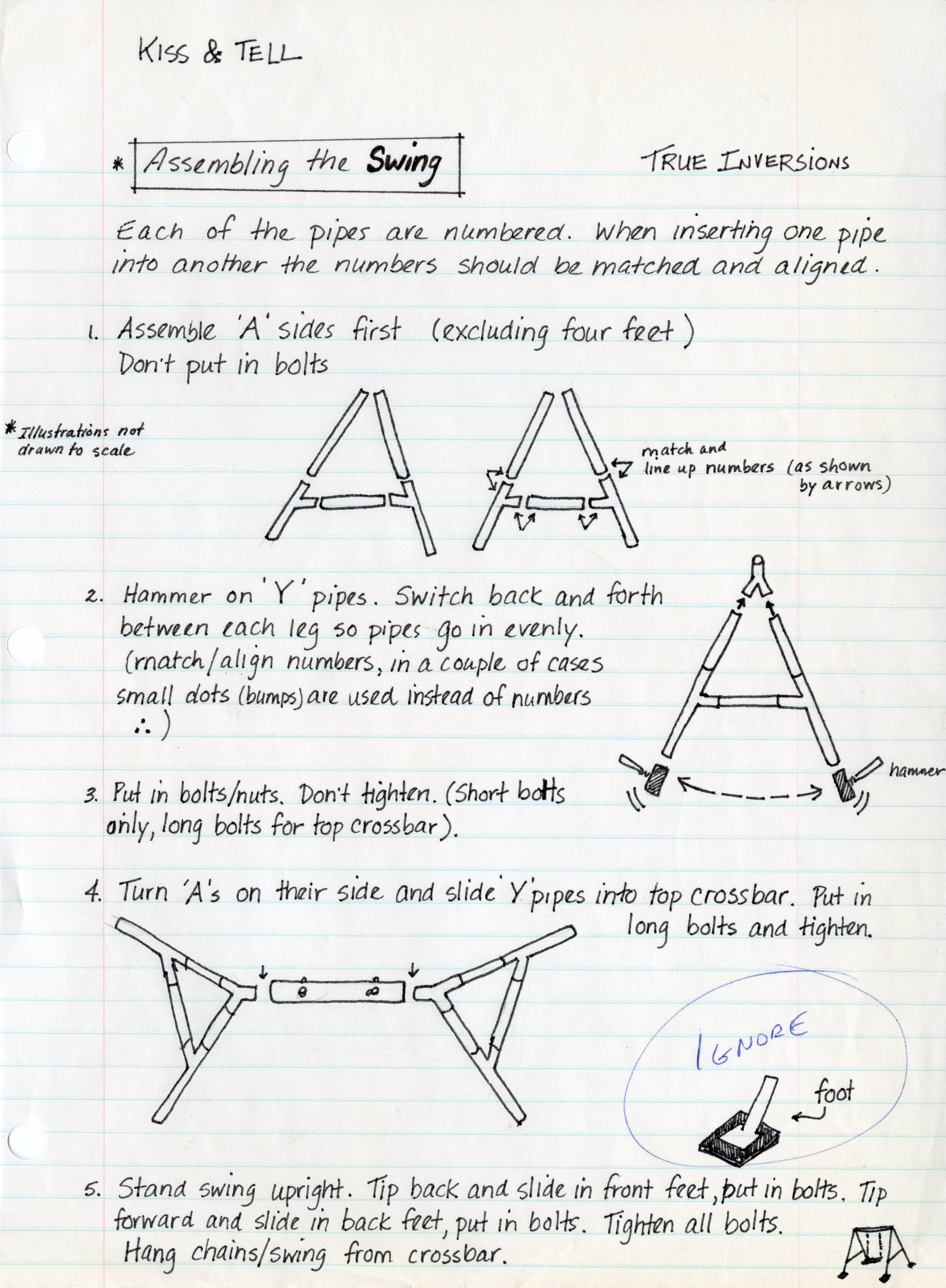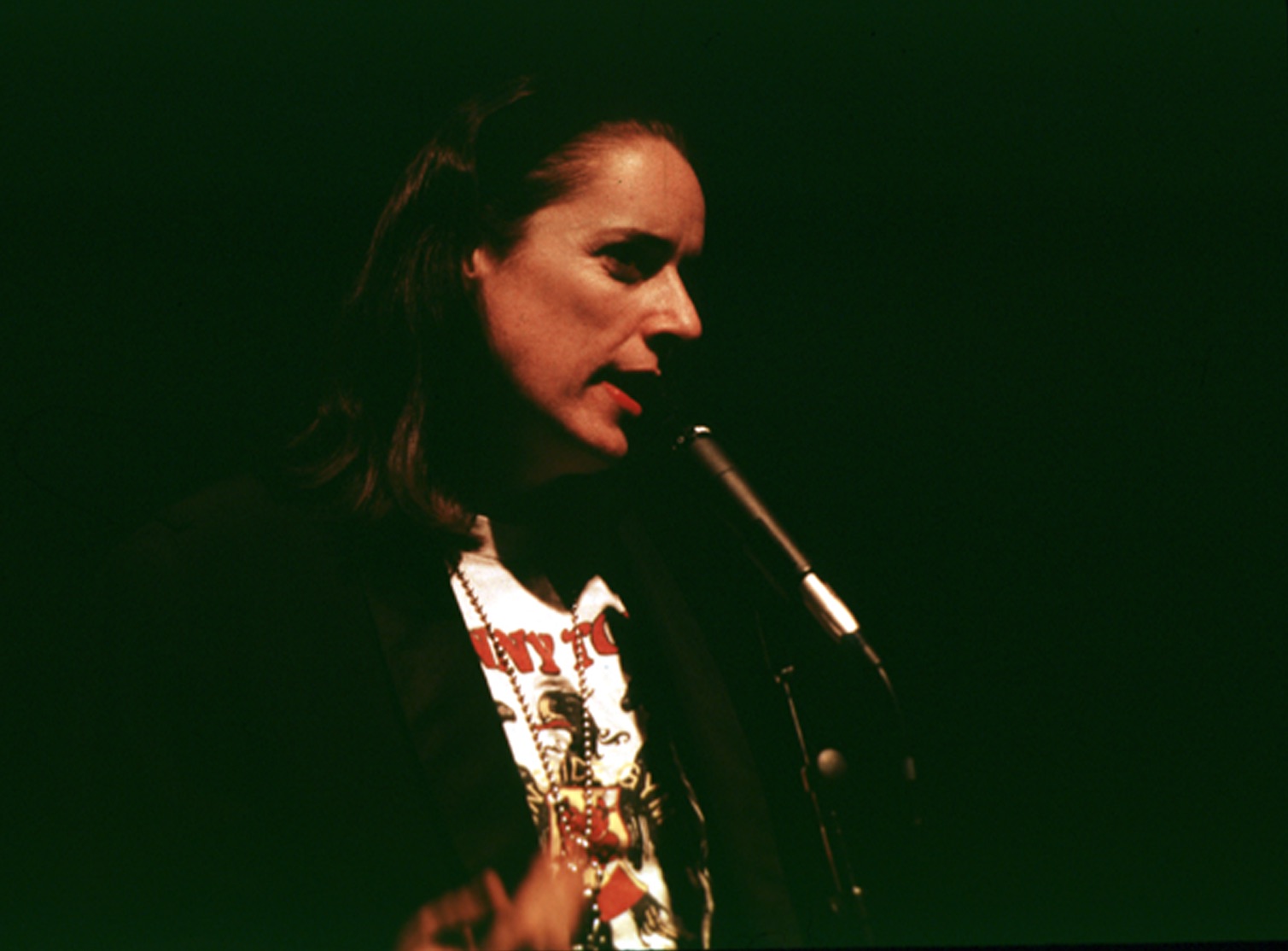True Inversions 1992

Kiss & Tell, True Inversions, 1992
Multimedia performance at the East Vancouver Cultural Centre
Simon Fraser University Library Special Collections and Rare Books, Burnaby
The above is an excerpt from Before the New Millennium, 2007, directed by Lorna Boschman.
Kiss & Tell embraced and made space for audience interactions with and responses to their work, so it made sense they would create and tour live performances as their next foray into lesbian storytelling. Susan Stewart spoke about being drawn to performance art: “For me, this live exchange which takes place in the present moment is what motivates the desire to produce performance art…. The desire for experience, the desire for expression, and the desire to learn.”


True Inversions was an intricately layered work, especially for a first performance. It played with the conventions of theatre, stand-up comedy, installation, and performance art to tell stories, both auditory and visual, about lived lesbian experiences at a time when those narratives were rarely recounted in honest, open, and public ways. As Persimmon Blackbridge described it: “It was monster. It ate our lives for months. Three performers, one singer, four scenes, three video tapes, four audio tapes, and over 200 slides. And three technicians.”
The title poked fun at nineteenth- and early-twentieth-century theories that claimed queerness was a pathological reversal of gender traits, referred to as sexual inversion. For example, German psychiatrist Richard von Krafft-Ebing’s 1886 book, Psychopathia Sexualis, described lesbians as “the masculine soul, heaving in the female bosom.” True Inversions toured to Vancouver, Banff (where photographs included in the performance were also shown at an exhibition titled Much Sense: Erotics and Life at the Banff Centre’s Walter Phillips Gallery), and Northampton and Cambridge in Massachusetts.
In True Inversions, Persimmon, Susan, and Lizard Jones wove together emotional narratives of desire, wit, comedy, sexiness, self-reflection, lust, and trauma. Like most of their performances, this one mixed live monologues with audio recordings and photographs and videos projected onto the back wall of each venue. The piece began with a darkened stage and a loud soundtrack of women moaning—“a collage of recordings of us and our lovers having sex,” as Persimmon put it. When the lights came up, the artists—who continued moaning—were revealed.

Persimmon’s first monologue was about seeing her lover at an art show and fantasizing about tearing off her dress and having sex with her in an alleyway. “But I’m too goddamn practical. We can’t afford to trash things and how would I get her home afterwards.” The audience reacted with cheers and laughter. Susan talked about her desire for a butch lesbian: “I bet a lot of straight girls try to pick you up. They don’t know what they are missing and I’m sure as hell not going to tell them…. Right now, you want me.” Lizard told a story about longing for a co-worker she repeatedly described as a very hard worker. “Like a magnet, she draws me. I feel like a pile of iron filings pulled together by her…. When she’s here I can only think of one thing, and that is fucking, fucking, fucking.” As the performance progressed, the stories blended as the three women talked over each other more and more loudly, eventually reaching a crescendo reminiscent of an orgasm.
This was a signature Kiss & Tell technique, inspired in part by live readings of simultaneous and phonic poetry performed at the legendary Cabaret Voltaire. Kiss & Tell continued to develop their technique in subsequent performances, using highly composed scripts that combined two or three voices in a variety of unique ways. The scripts were meticulously rehearsed and rewritten until the artists could shape a wave of overlapping voices that would still allow certain phrases to jump into the foreground, giving the audience a line to follow through the swelling intensity of sound.
During one section of the performance, Susan, Persimmon, and Lizard read letters to their mothers about being lesbians—letters that were never sent—while taking turns on a full-size swing built for the show. Susan talked about “deep, passionate, engrossing friendships between women” in her letter. “I followed your example in this. I thrive in the love of friendships. I cross the line… the line that separates our worlds. The line that gives me my name: lesbian.” Later, a video of Persimmon’s mother swinging in a playground was projected behind Susan, who swung onstage as Lizard read her letter to her mother. The video projection then shifted, and Lizard was shown swinging with Persimmon, dressed in the same outfit she wore onstage, thus tripling the image. At the end of her letter, Lizard got onto the swing. The performance ended with Lizard on the swing and Susan and Persimmon embracing each other against its wooden structure.

In December 1992, controversy followed the True Inversions performance at the Banff Centre. Journalist Rick Bell, writing in the Alberta Report magazine, critiqued the show’s explicit sexual representations—a criticism that was taken up by Alberta’s deputy premier, Ken Kowalski, who called the performance “God-awful, abhorrent [and] not acceptable,” despite never having seen it. The performance included a screening of a twenty-eight-minute video of the same name directed by Vancouver filmmaker Lorna Boschman (b.1955). The video portion of the performance featured the artists monologuing about the impacts of abuse and religion on their evolving sexual identities. Tackling serious subject matter through the lens of sex, the video was singled out as especially obscene in Bell’s review. Ironically, in the video, an official-looking “censored” stamp and a citation from Canada’s Criminal Code were superimposed onto close-up images of explicit sex scenes as a critique of the censorship already occurring around queer art and publications at the Canada/U.S. border.
As Persimmon wrote, “True Inversions comes out of specific communities, at a specific point in time. We are addressing issues and debates that are ongoing with our communities—issues like censorship and allegations of censorship; how past sexual abuse affects our present sexuality; the way that ‘whiteness’ is seen as normal and universal; s/m; butch/femme; the constructed nature of sexual imagery; and the effect that a lesbian identity has on our relationships with our mothers.”

 About the Author
About the Author
 More Online Art Books
More Online Art Books
 Acknowledgements
Acknowledgements